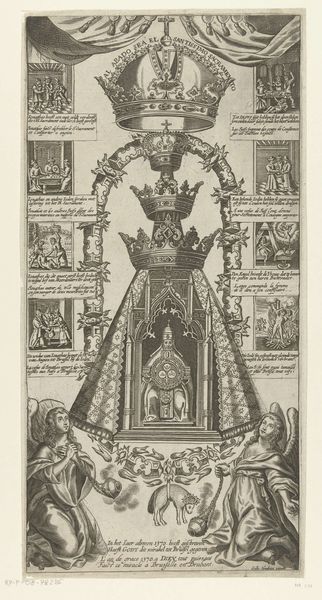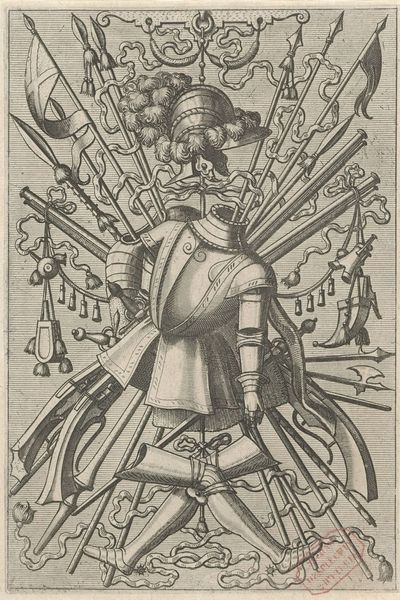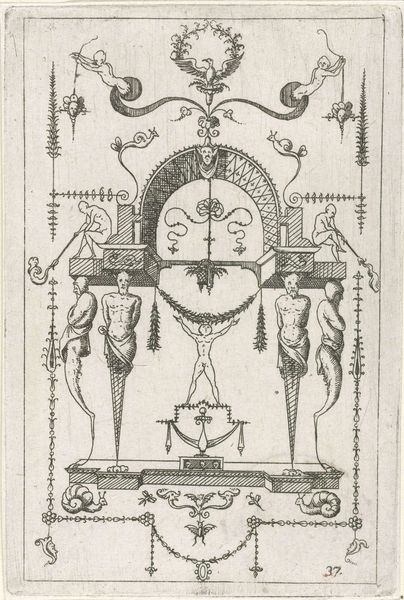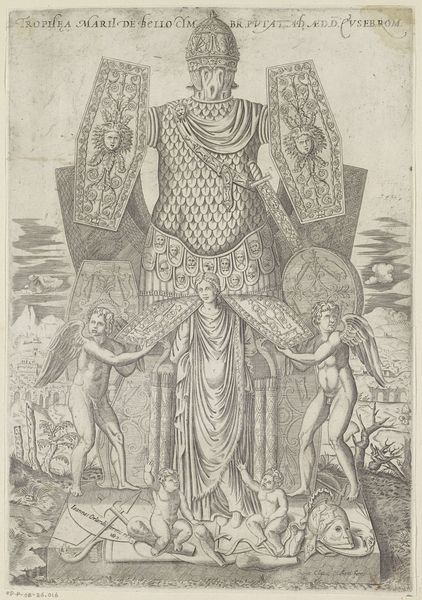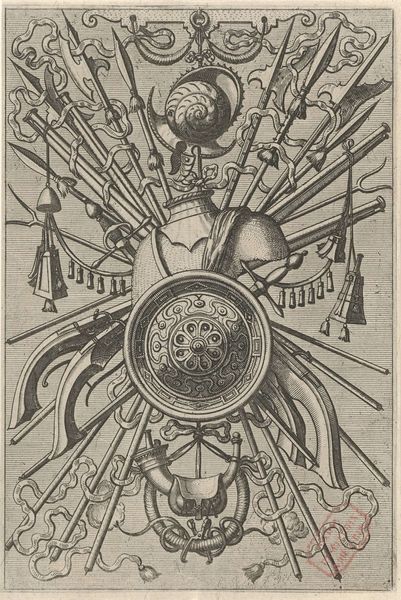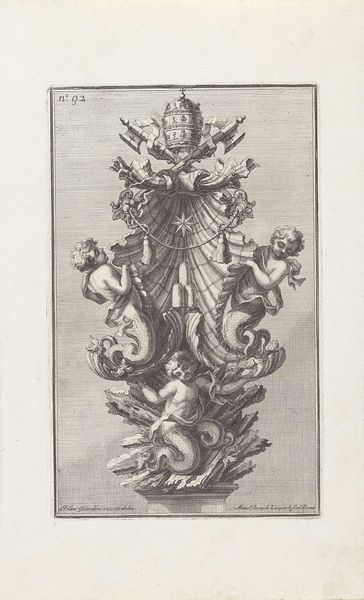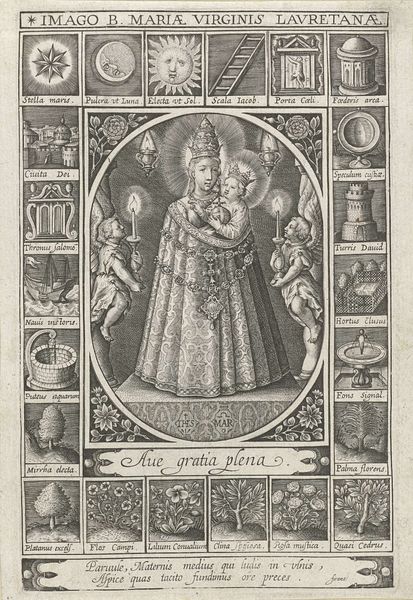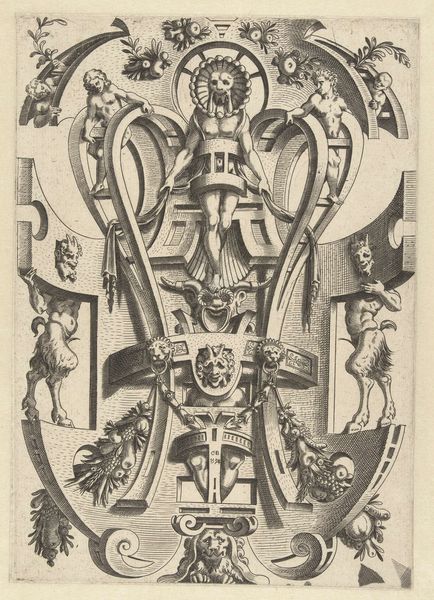
print, engraving
#
allegory
#
baroque
# print
#
figuration
#
line
#
history-painting
#
engraving
Dimensions: height 432 mm, width 217 mm
Copyright: Rijks Museum: Open Domain
Curator: Here we have an engraving titled "Tabernakel met crucifix", likely made sometime between 1666 and 1676 by an anonymous artist. Editor: Immediately, I’m struck by the intricacy. It's a layered world, almost dreamlike in its density of detail, and the contrasts are really stark, very graphic in the way it leads the eye. Curator: That visual complexity is really key to understanding engravings of this era. The technique involves meticulously incising lines into a metal plate, typically copper, which then gets inked to create these crisp lines you mentioned. It allowed for the mass production of imagery, and disseminated information far and wide. The allegorical dimension with those many textual details makes it a compelling cultural document. Editor: Absolutely! Look how those flowing inscriptions interact with the religious iconography. It’s a powerful fusion of the sacred and the profane—sort of grounding lofty spiritual themes in tangible reality. What’s interesting to me are all those crown elements which seem to float, almost detached from reality in an unnatural vertical orientation. What do they represent to you? Curator: I think those crowns function symbolically, representing the hierarchy of heaven and divine authority, especially in contrast to the figures at the bottom who appear like ordinary humans bearing witness to something sublime, so maybe its more grounded than what it first looks like. Consider how this work engages viewers both spiritually and socially within the context of religious devotion, making sacred iconography and associated text available to the common person in printed form. Editor: So, thinking about process, I'm just awed by the number of actions to complete the engraving itself. One tiny, perfectly rendered incision at a time… You can imagine someone totally lost in labor, perhaps even driven to meditation. That process informs the final form— it's a really palpable expression of dedication, even if we don’t know the specific artisan's background, or how they experienced this form of labor. Curator: Exactly, you are drawn into the physical act, revealing insights into cultural forces in which this kind of labor thrived in early modernity, including access to religion. Thinking through your impression allows a reading that considers how objects of devotion functioned for various segments of the population. Editor: Right. Considering both devotional and production elements reveals something truly rich about this artwork, as an artifact deeply embedded within an expansive spiritual and socioeconomic system.
Comments
No comments
Be the first to comment and join the conversation on the ultimate creative platform.
